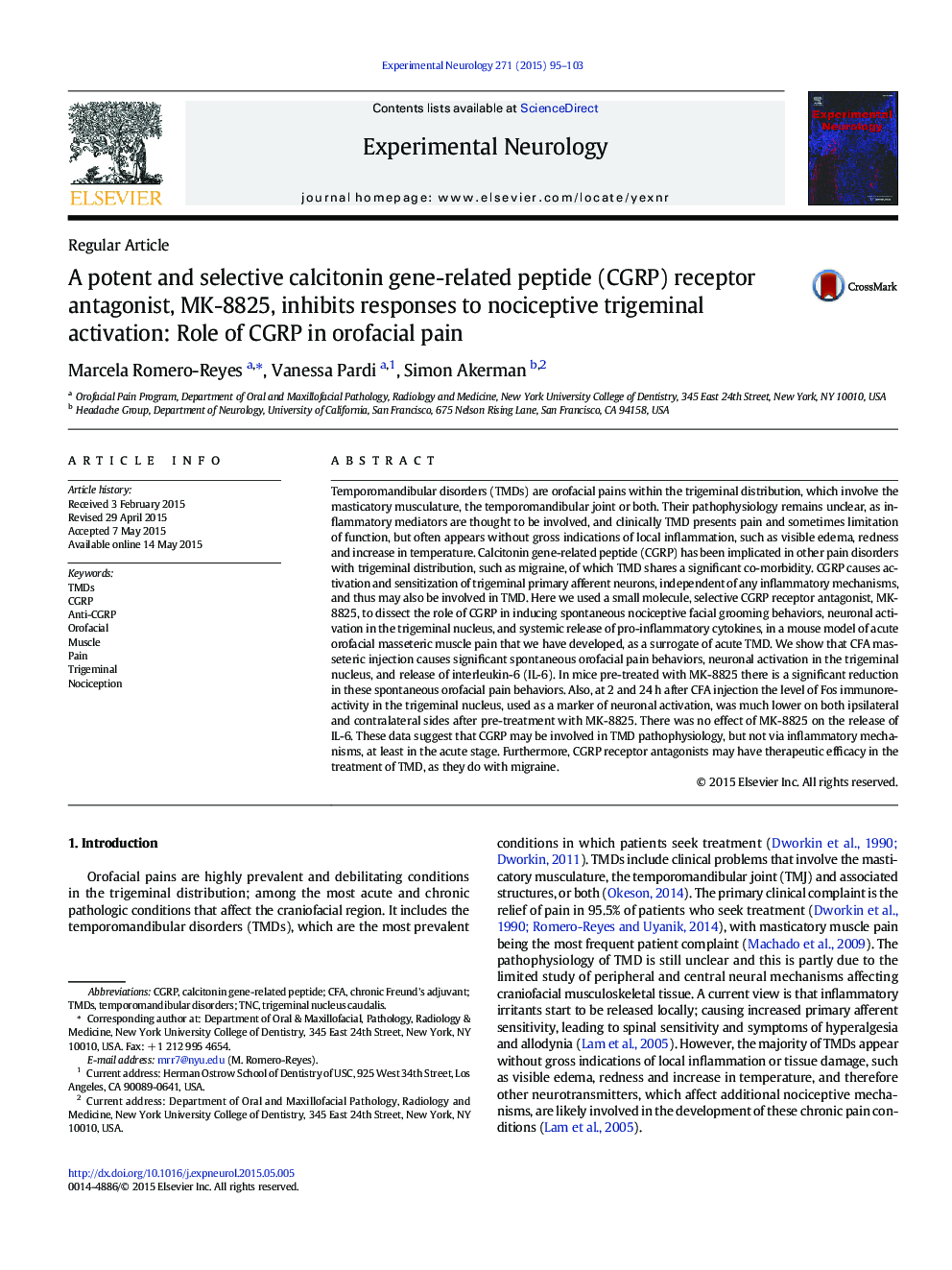| کد مقاله | کد نشریه | سال انتشار | مقاله انگلیسی | نسخه تمام متن |
|---|---|---|---|---|
| 6017217 | 1580162 | 2015 | 9 صفحه PDF | دانلود رایگان |

- MK-8825 inhibited nociceptive grooming behaviors in a model of orofacial pain/TMD
- MK-8825 attenuated the evoked neuronal activation in the trigeminal nucleus caudalis
- MK-8825 had no effect on the release of inflammatory cytokines
- Data suggest CGRP is involved in acute orofacial masseteric muscle pain, but not via activating inflammatory mechanisms
Temporomandibular disorders (TMDs) are orofacial pains within the trigeminal distribution, which involve the masticatory musculature, the temporomandibular joint or both. Their pathophysiology remains unclear, as inflammatory mediators are thought to be involved, and clinically TMD presents pain and sometimes limitation of function, but often appears without gross indications of local inflammation, such as visible edema, redness and increase in temperature. Calcitonin gene-related peptide (CGRP) has been implicated in other pain disorders with trigeminal distribution, such as migraine, of which TMD shares a significant co-morbidity. CGRP causes activation and sensitization of trigeminal primary afferent neurons, independent of any inflammatory mechanisms, and thus may also be involved in TMD. Here we used a small molecule, selective CGRP receptor antagonist, MK-8825, to dissect the role of CGRP in inducing spontaneous nociceptive facial grooming behaviors, neuronal activation in the trigeminal nucleus, and systemic release of pro-inflammatory cytokines, in a mouse model of acute orofacial masseteric muscle pain that we have developed, as a surrogate of acute TMD. We show that CFA masseteric injection causes significant spontaneous orofacial pain behaviors, neuronal activation in the trigeminal nucleus, and release of interleukin-6 (IL-6). In mice pre-treated with MK-8825 there is a significant reduction in these spontaneous orofacial pain behaviors. Also, at 2 and 24Â h after CFA injection the level of Fos immunoreactivity in the trigeminal nucleus, used as a marker of neuronal activation, was much lower on both ipsilateral and contralateral sides after pre-treatment with MK-8825. There was no effect of MK-8825 on the release of IL-6. These data suggest that CGRP may be involved in TMD pathophysiology, but not via inflammatory mechanisms, at least in the acute stage. Furthermore, CGRP receptor antagonists may have therapeutic efficacy in the treatment of TMD, as they do with migraine.
Journal: Experimental Neurology - Volume 271, September 2015, Pages 95-103